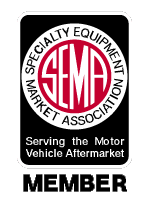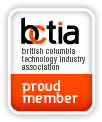Medallion Hardware Technology
Techsol's Hardware Technology Platform
Medallion Hardware Technology
Techsol's products are based on processors running low-power RISC cores designed by Advanced RISC Machines (ARM) of England.
They are very advanced CPU modules, packing more features into a smaller space than other 32-bit processor families.
The older designs are based on ARM-720T core processors.
The newer designs are based on ARM-920T core processors.
Every
Medallion Computer Module contains:
- NOR flash for booting
- NAND flash for bulk storage
- SDRAM
- additional power circuitry
- Audio input and output
- USB hosts and device
- LCD controllers
- keypad scan HW (up to 8x11 matrix)
- touch screen controller
- GPIO pins
- reset controller
- battery voltage monitoring (primary and secondary)
- Secure Digital (SD) or MultiMediaCard (MMC) interface
- SPI 3-wire synchronous interface
- I2C 2-wire synchronous interface
- UARTs (one with modem control lines)
- IrDA interface with power-management control lines
- test-input and dedicated debug-LED output
Plus the one thing that any other Computer-On-Module this small doesn't have: a 32-bit bus with 64 MB of address space on each of multiple chip-select lines.
Plus 4 "byte-lane" WRITE lines, READ line, Expansion Clock and Ready signals, and multiple interrupt inputs.
How can we offer all of this?
Simple: we have 240 pins connecting our modules to your I/O board.
And they are split across 2 connectors on opposite edges of the board, for maximum mechanical stability.
Plus there are a couple dozen Ground pins for maximum electrical stability too!
And our low-noise PCB layouts have passed FCC and CE emissions tests in many products.
Peripheral Hardware Technology
Since Techsol packs more features onto our computer modules, you'd also expect more support for peripherals on the I/O board too.
Well, you won't be dissappointed!
Here's a partial list of technologies for which we have proven designs:
| Technology | Proven Designs |
|---|---|
| Ethernet | 10BaseT: Low-cost, Low-power in Commercial and Industrial Temp. with Power Management. (Cirrus 8900a);
10BaseT/100BaseTX (Fast Ethernet): Low-cost Commercial Temp. (SMSC 9118) |
| Wireless | IrDA with Power Management (PM); Bluetooth; 802.11; ZigBee; Cellular with PM: GSM, GPRS, CDMA-1x |
| USB Host | USB 1.1: Hosts, Hubs; USB 2.0: Hi-speed Host (Philips) |
| USB Device | USB Mass Storage: USB flash drives, hard disk drives; Input devices: Keyboards, Mice, Keyboard controllers; Wireless devices: Bluetooth, 802.11; |
| Audio | CODECs: line-in, line-out; i-CODECs with PM: Mono, Stereo, Single-ended, Differential, Headphone Amps, Speaker Amps |
| Displays | Character: LCD; Graphic: STN, CSTN, TFT, LTPS, OLED; Custom LCDs |
| Inputs | Buttons: Direct to CPU, Matrix-scanned; Keyboards: Laptop direct-matrix keyboards (Fujitsu, Zippy); USB Keyboards |
| Sensors | Analog: direct reading, 4-20 mA; Digital: 1-wire, 2-wire (I2C), 3-wire (SPI), 4-wire (USB including LabJack support) |
| Power | AC-DC: custom supplies; DC-DC: high-efficiency SMPS converters; Li-Ion Batteries: Power Supplies, Chargers, Gas Gauges |
Contract Design Services Options
- If you need a low- to medium-volume product designed, or you need working protos to show your boss/partners, then take a look at our low-cost semi-custom design services.
- If you need a high-volume product, or you must minimize product costs, even at the expense of greater engineering costs, then look at our fully-custom design services.
Techsol's Medallion Hardware Frequently Asked Questions
We hope these provide answers to your questions.
If not, send your Hardware questions to <support@techsol.ca>.
What are the advantages of using Medallion CPU Modules?
All modules are pin-compatible for most features, so it is possible to prototype HW and develop SW on the slow devices and then switch Medallions to the faster ones for production.
You also have the flexibility of offering different models with difference performance specs at different prices.
And, of course, you gain the advantage of never having to worry about a CPU becoming obsolete because you can upgrade over time to the latest processors.
We will be releasing at least one new Medallion module every year.
If you're looking at low-power Linux single-board computers you'll find that ours offer several advantages over many others.
- Basically, we don't have "external I/O" connectors on the boards ... we don't try to force a form-factor on you!
- Our devices have very low power consumption
- They won't need heatsinks or fans. (saving space and cost).
- At 4 square inches, they are VERY small.
- The board-to-board spacing is variable from 5mm to 16mm, so you can add lots of circuitry between boards without wasting space
- They were the First with USB HOST and DEVICE ports.
- They are attractively priced compared to the competition.
- Especially when you consider all the extra HW and SW features that are bundled.
- They are supported by experienced engineers who develop real products, just like you do!
What are the temperature ratings of the Medallion CPU Modules?
Most of the parts on the SA2410 are rated industrial temperature. Exceptions are:
- the CPU
- the NAND Flash
- the SDRAM
We use X7R CAPs (or tantalum) for wide temperature operation.
The CPU can be operated at lower speeds to extend the temperature.
The NAND is NOT available in industrial temperatures.
The SDRAM can be UPGRADED to industrial by request.
One customer did extensive temperature profiling, and even though
we specify operation to +70 °C, they found operation to be reliable to
past +80 °C (which they needed for desert operations).
What comments can you make regarding regulatory approvals for Medallion CPU Modules?
There are no UL/CSA issues, as we operate below 45 volts.
As for FCC, many of our customers have migrated to our CPU modules from X86 designs. The only ones giving us feedback on emissions test results report that our boards have much LOWER RF emissions than the ones that we replaced. We follow all the proper design procedures for low-emissions radiation.
We use a high-end Mentor Graphics CAD package for PCB design. However, we do not use the auto-router. ALL TRACES are carefully HAND ROUTED to minimize length and to minimize emissions.
Plus, we use the "more is better" approach to ground planes and capacitors in our designs. You will find that our power traces and supplies have less noise and ripple than what is common in modern designs.






